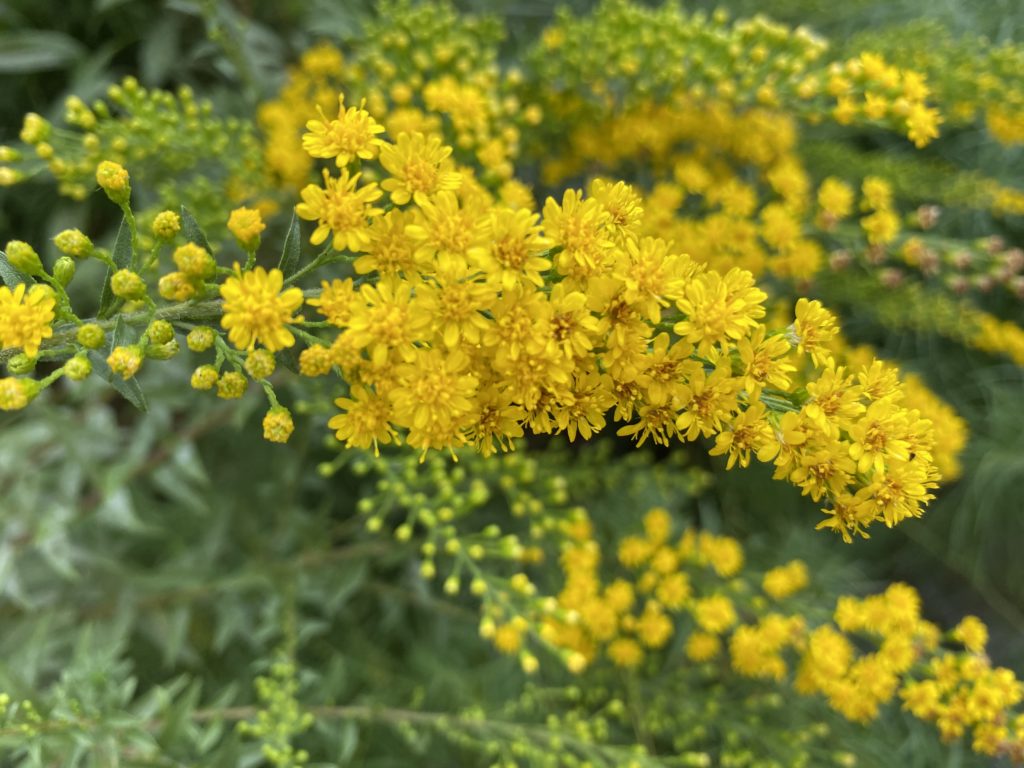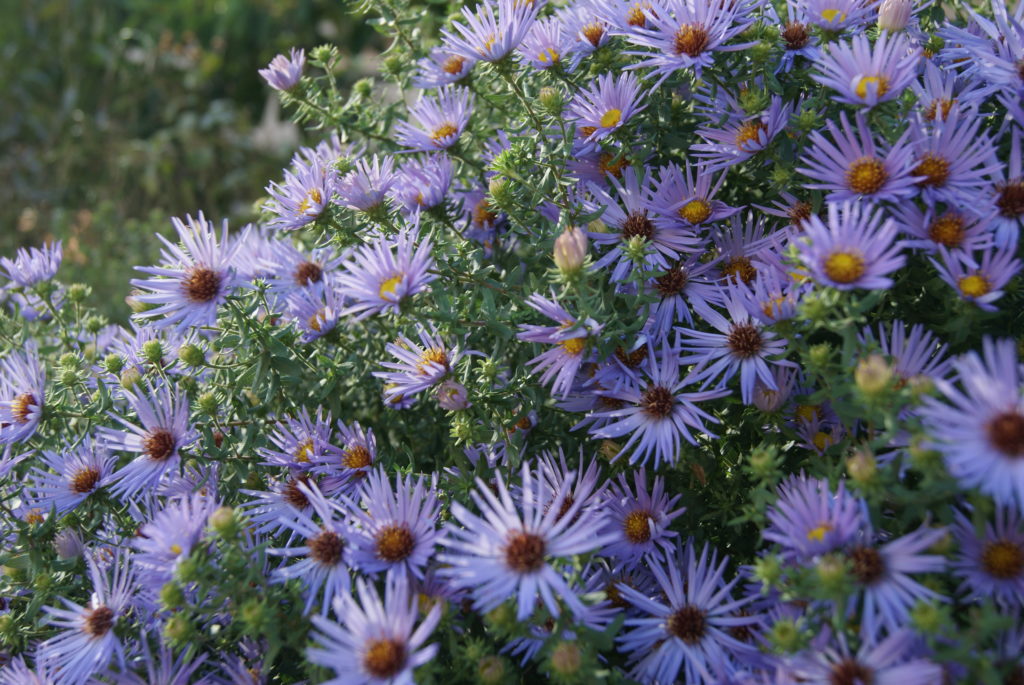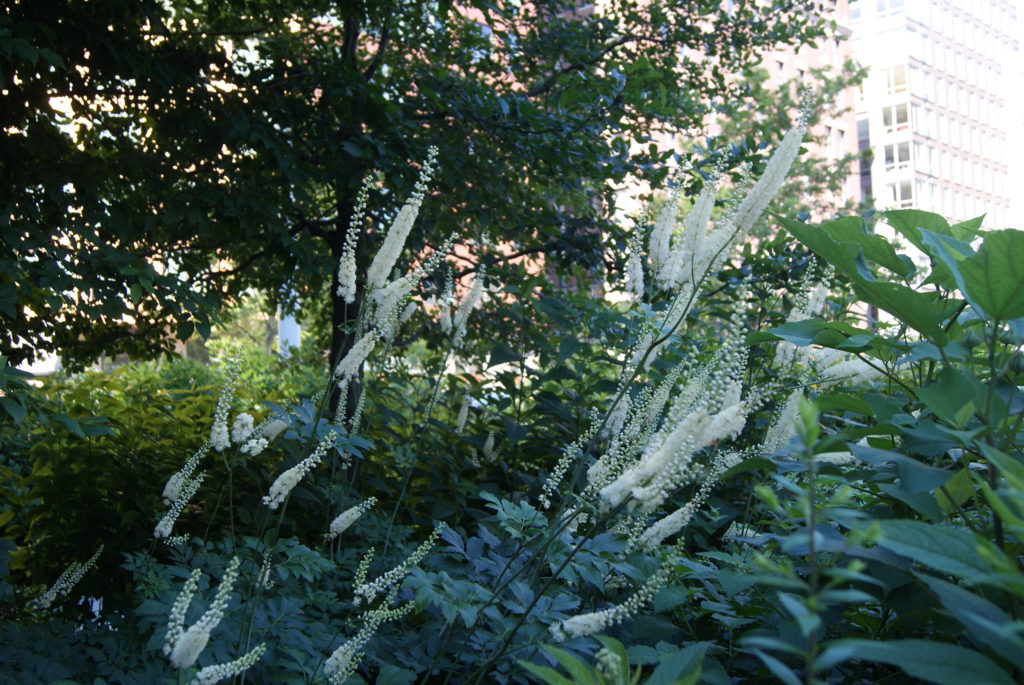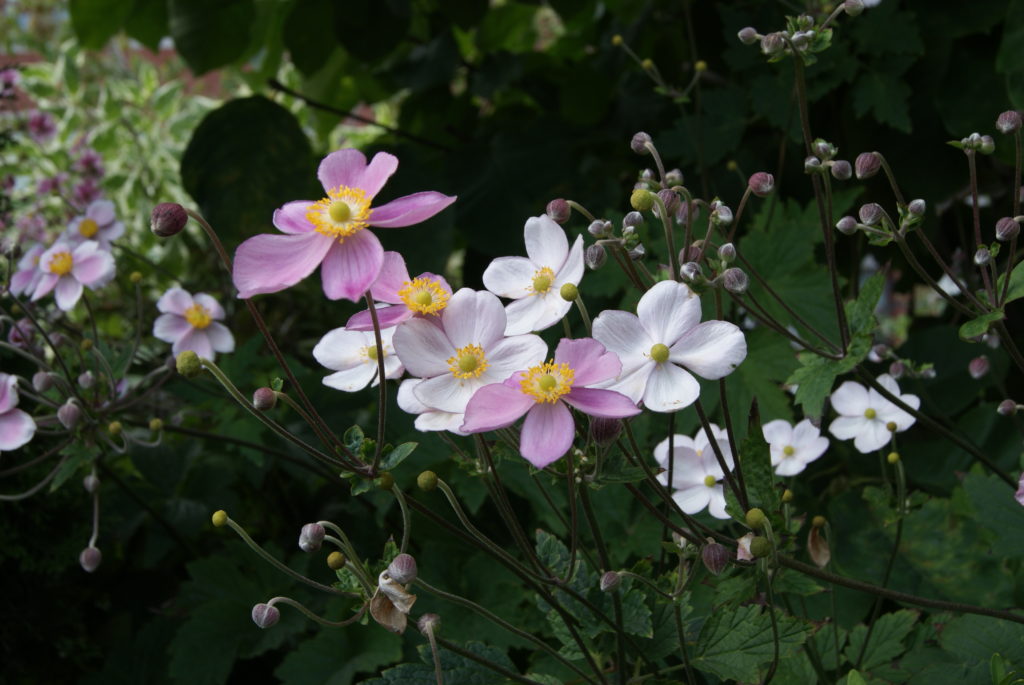What’s blooming on The Greenway this September
Written by Darrah Cole, Senior Horticulturist and Designer and Nicole Semeraro, Seasonal Horticulturist
How does a bear know when it’s time to hibernate? Why do April showers bring May flowers? Many plants and animals don’t have calendars but take cues from the changing seasons.
Changes such as temperature, precipitation, and length of day signal organisms to enter new phases of their lives. Buds form on plants as temperatures warm in the spring and deciduous trees and shrubs lose their leaves and become dormant as temperatures cool in the fall
Phenology is the study of the timing of biological events in plants and animals such as flowering, leaf unfolding, hibernation, insect emergence, and bird, fish, and mammal migration. Phenology is literally “the science of appearance.”
The Greenway Conservancy has a dedicated group of volunteers who walk the park and record these phenological observations each week. Throughout the season, they help find the best, most exciting and interesting plants blooming, in real time!
By mid September, you can expect to find the following plants in peak bloom on The Greenway:

Solidago ‘Fireworks’
Solidago rugosa ‘Fireworks,’ or commonly known as rough goldenrod, is a native perennial that blooms bright yellow and is often found alongside aster. The small, tight clusters of flowers bloom in panicles along the branching stems. This showy plant stands tall when the rest of the summer blooming plants are beginning to die back for the fall season. Numerous Solidago species provide welcome late season nectar for native bees, butterflies, moths, beetles, and many other pollinators. In addition to S. rugosa Fireworks you may find the species sempervirens (seaside goldenrod), caesia (wreath goldenrod) odora (sweet goldenrod), and more on The Greenway.

Symphyotrichum oblongifolium ‘Raydon’s Favorite’
Symphyotrichum oblongifolium ‘Raydon’s Favorite’, or commonly known as aromatic aster, is a native herbaceous perennial. It blooms small daisy-like purple flowers in late summer and is a reliable fall workhorse in perennial borders and meadows alike. Asters attract late season birds and butterflies. As a technical garden advantage, aster is great in mass plantings and is useful for erosion control in native landscapes.

Actaea racemosa
Actaea racemosa, a shade loving, woodland plant has many common names including Black cohosh, bugbane, and snakeroot. Providing interesting foliage all season it finally blooms curving white spikes in the early autumn. These stand out nicely, especially in a woodland understory, with the graceful spiked form and white, light-catching bloom. Like many plant names this one has an interesting back story nicely summarized by the Missouri Botanical Garden, “The common name of bugbane is in reference to the odoriferous insect repellent properties of this plant. Cohosh comes from an Algonquin word meaning rough in reference to the appearance of plant rhizomes.”

Anemone tomentosa and hybrids
The japanese Anemone are still blooming throughout The Greenway, with the beautifully flowering Anemone x hybrida ‘Whirlwind’ and ‘Pamina’ highlighting Dewey Square and Fort Point Channel and Anemone tomentosa ‘Robustissima’, Anemone ‘Pink Saucer’ and white ‘Honore Jobert’ putting out a flush of blooms in the North End. The Grapeleaf Anemone (Anemone tomentosa ‘Robustissima’) are looking especially bountiful this week, producing a plethora of gracefully cascading globe-like buds atop wiry stems that open to reveal light pink flowers. These will continue to flower into the fall. This windflower is among the most adaptable of its genus and is quick to naturalize an area. It does well in full sun, but is best in a protected, partially shady environment. The prize for over achieving goes to the Anemone x hybrid ‘Whirlwind’, which is positively gluttonous in its blooms.
